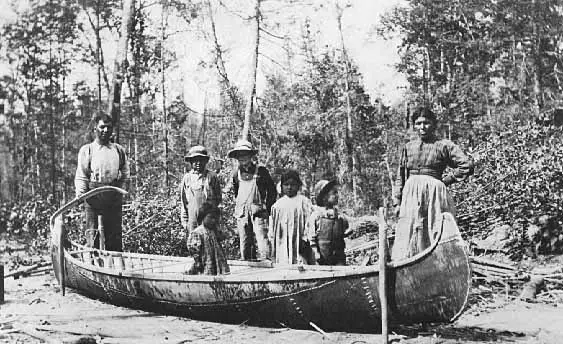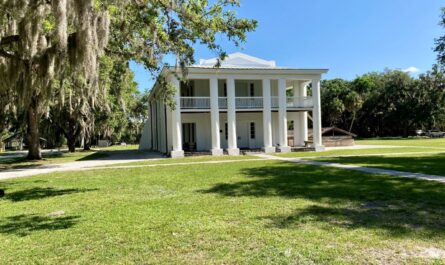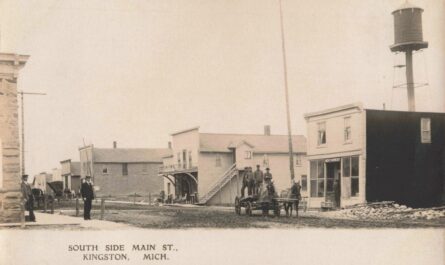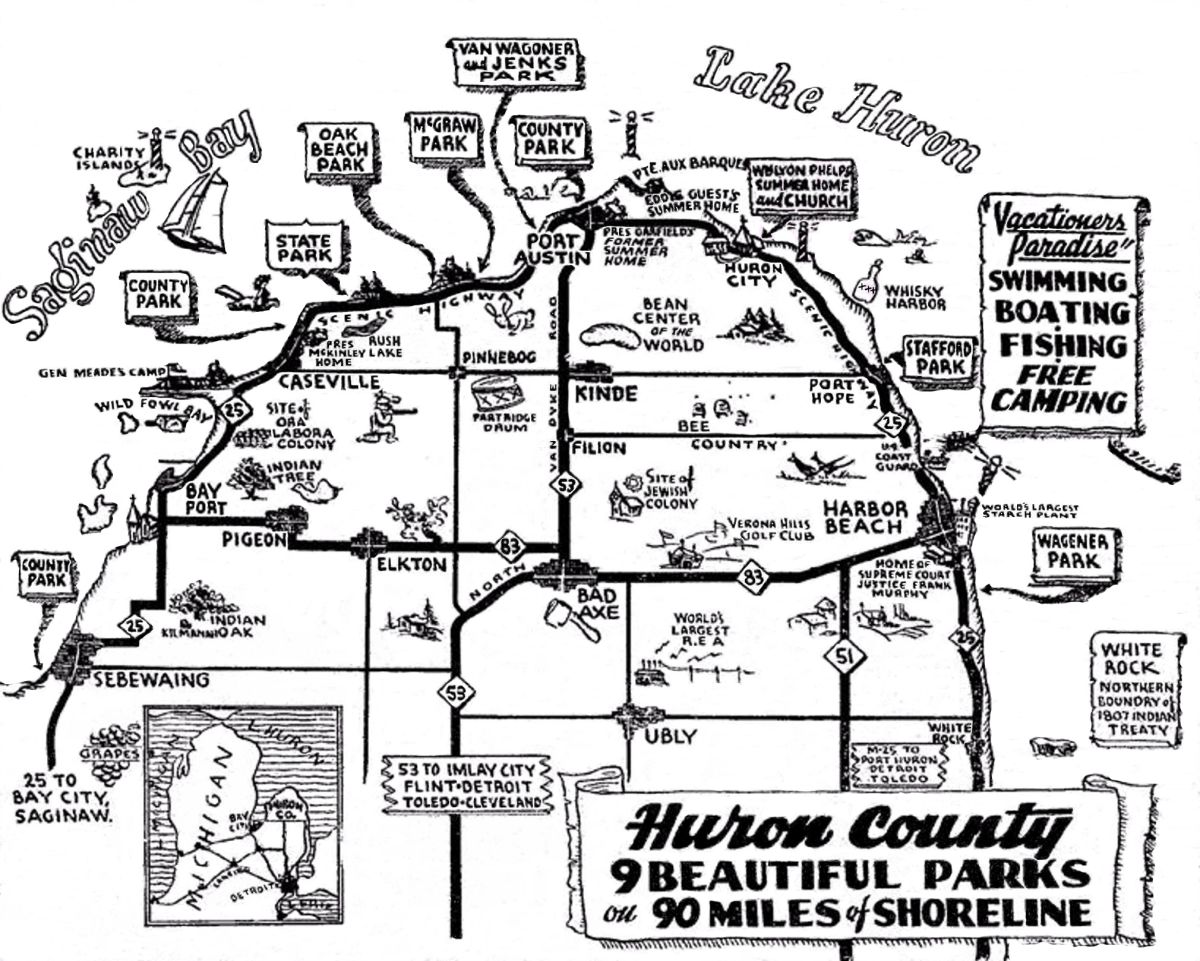Michigan Indian Culture in the Thumb
Michigan’s Thumb was recognized as rich hunting and fishing grounds for indigenous people hundreds of years before Europeans explored and white settlers arrived in the state of Michigan. As a result, the Thumb was a strategic area that was to be held for the resources and a control point for access to the upper Great Lakes. Michigan Indian Tribes fought and held the area from the Tittabawassee River down to the Detroit straights with the area changing hands many times over history. The story printed below came from a newspaper clipping found at the Caseville Historical Society. This is a small tale of a chief of a band from the greater Anishinaabe tribe located near Sebewaing.
A Great Tree Chosen as Tribute to Michigan Indian Chief
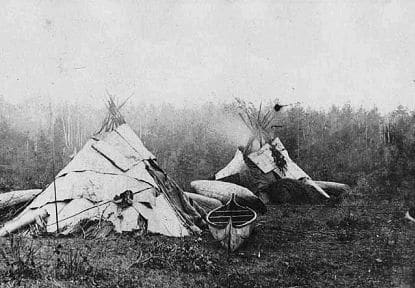
January 20, 1933— Memorials of stone were erected by nations, honor their great men but a tribe of Chippewa Indians who lived near Kilmanagh nearly a century ago used a masterpiece of nature to honor its chief.
Chief Standing Oak, head of this tribe, is a figure in many Indian legends, told and re-told many times in the last century that has passed since his reign as chief. Among the legends is that of the dedication of a tall oak tree in honor of Chief Standing Oak. This tree once stood in a grove of oak trees, towering above all the others.
Indians cut down all other oak trees in the grove, according to the legend, and left only the magnificent one as a monument to their chieftain. The mammoth monument fell later under the sway of the ax as “progress” began in the mid-1800s.
Chief Standing Oak ruled the tribe of Chippewa Indians, living near Kilmanagh between the Sebewaing river and Shebeon creek. According to the legend, this tribe and another one of the Michigan tribes, presumingly the Fox, living near were mortal enemies. The latter tribe to have carved Indian signs, visible today, on rocks on the bank of the Cass River, near Holbrook, These Indians attacked Chief Standing Oak’s tribe and a fierce battle was fought on the banks of the Sebewaing River, which was then known as DuFill or Thread river.
Vanquished Enemies
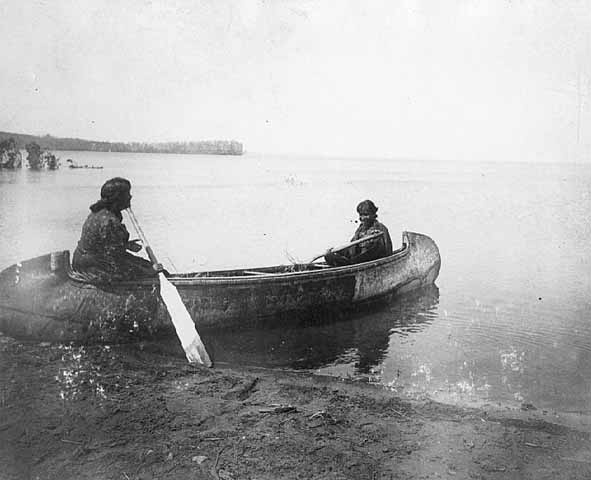
The battle lasted all day and was renewed the next morning. Chief Standing Oaks tribe drove the invaders back to the banks of the Shebeon creek, where they made a final stand. Practically all of them were killed at that point.
The numerous Indian skeletons dug up on the banks of the Sebewaing river and Shebeon Creek and the many arrowheads and broken hatchets found on the site of the battleground give credence to this story.
Wins Praise of Tribe

Chief Standing Oak’s generalship in this battle established him more firmly in the regard of the Indians of his tribe as a leader. It is said that his victory in this battle was one of the reasons the Indians of his tribe honored him by selecting a tall oak tree as a monument to Chief Standing Oak, certainly an appropriate memorial to this valiant Michigan Anishinaabe warrior.
The Legend of Michael (1835)
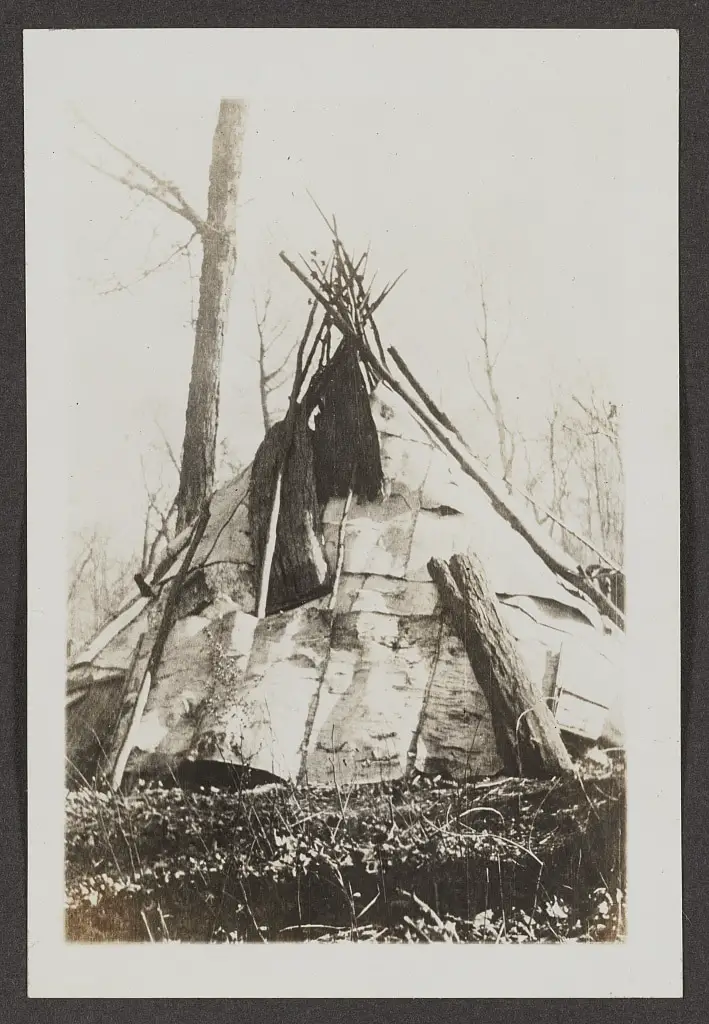
Another story of Michigan history was about a crew member who was part of the founding of Grindstone City. This soldier of fortune came to Grindstone City with Captain Peer, then followed the shoreline to Sebewaing (Where-the-water flows past) to make trinkets for the friendly tribal population of Chippewas.
Chief Standing Oak (father of Brilliant Rising Sun) told Michael about the fierce battle fought on the banks of the DuFill (Sebewaing) river when the Fox Indians came to rout his tribe from their
happy hunting grounds.
The battle lasted all day, and was renewed the next morning.
The invaders were driven to the banks of the Shebeyon river, where they made a final stand. Practically all of them were killed at Kilmanagh (Michael called it the “kill many” place, the Indian “Kilman-ugh.” The numerous Indian skeletons dug up on the banks of the Sebewaing and Shebeyon rivers, and then any arrowheads and broken hatchets picked up on the site of the “battleground ” give credence to this story of Michael’s.
Dr. Dixon, government doctor, stated “the invaders were Fox Indians from Holbrook, and very few got back .”
Because of his temper, the Indians called Michael (pronounced Mick-le) “Fire-in-the-Head.” Jake Gremel referred to him as “the prince”; said he was a fine fellow who kept away from women but attended ball games. This genteel sportsman failed to tell whether he wore a red or black necktie
More About Michigan Indian Tribes in the Thumb

Indian Trails in the Upper Thumb – If you live or are in Michigan’s Upper Thumb long enough, you will encounter unimproved roads and trails. One such system of Michigan Indian Trails was well known and established by Native Americans for over 1000 years in the Great Lakes region. It’s a critical part of native lands’ in Indian history.
Sebewaing History as a Harbor – The lumbering era in Michigan’s Upper Thumb from 1860-1880 resulted in booming towns all along the shoreline. Sebewaing was no exception. While it did not benefit from the proximity of being on Lake Huron like Sand Beach (later named Harbor Beach) or having a deep river outflow like Caseville, it’s historical spot as a rich hunting area by native Americans and natural outflow to Saginaw Bay by the Sebewaing River predestined it as a natural gathering spot.

Michigan’s Vast Indian Trails – For thousands of years, Native American people crisscrossed Michigan on a system of trails that were in tune with the land and so perfectly placed that the routes are still in use today by our highways and state roads. The Michigan Indian Trails were part of the Great Trail network, a trade route that extended from Lake Michigan in Northern Illinois hundreds of miles to the eastern seaboard.
Shore Indian Trail – Hull’s Trace – The Shore Indian trail was one of the five major routes of land travel leading out of Detroit. It was one of the best known to the early settlers. The trail begins from the rapids of the Maumee River to Toledo, then closely along the shore through Monroe and Brownstown to Detroit. From Detroit, it continues northward along with the Detroit and St. Claire Rivers, past Fort. Joseph, (Fort Gratiot), and into the Thumb. It was one of the first roads for the United States in the Northwest Territories and a prize for the new American government. There would be some debate if it continued to the spiritually significant location of White Rock and further north to Pointe Aux Barques.
Discover more from Thumbwind
Subscribe to get the latest posts sent to your email.

